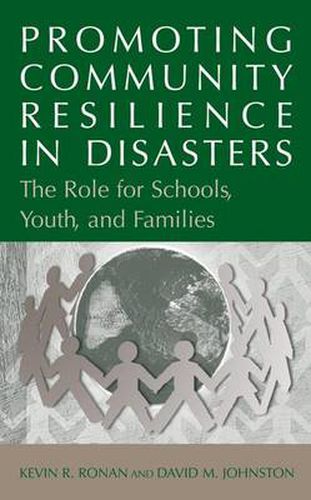Readings Newsletter
Become a Readings Member to make your shopping experience even easier.
Sign in or sign up for free!
You’re not far away from qualifying for FREE standard shipping within Australia
You’ve qualified for FREE standard shipping within Australia
The cart is loading…






This title is printed to order. This book may have been self-published. If so, we cannot guarantee the quality of the content. In the main most books will have gone through the editing process however some may not. We therefore suggest that you be aware of this before ordering this book. If in doubt check either the author or publisher’s details as we are unable to accept any returns unless they are faulty. Please contact us if you have any questions.
A myriad of models are available to guide practice before, during, and following disasters. As emphasized in this book, we value the role of research in informing our assessment, education, and intervention efforts in this area. Keeping an eye on those elements that have research backing certainly assists with quality control generally. However, more specifically, we also stress the idea that there is evidence to support a role for hope and positive expectations in the motivation and engagement process. In addition, the more that people, including youth and adults, actively participate in efforts designed to help, the more benefits they tend to receive. The role of research in providing that initial hope and inspiring more active engagement with internal and external resources before, during, and after a disaster is part of the foundation of our practice in this area. In fact, in the clinical psychology training program directed by the senior author, the idea that we attempt to inculcate with our trainees is the idea of hope and engagement on an evidence-based foundation. Consequently, we do advocate for models of practice that have identified active ingredients that are included: those particularly identified through controlled evaluation research. However, it is also the case that a number of risk and protective factors identified through a number of studies (e.g., see Chapter 2) have as yet to be systematically included.
$9.00 standard shipping within Australia
FREE standard shipping within Australia for orders over $100.00
Express & International shipping calculated at checkout
This title is printed to order. This book may have been self-published. If so, we cannot guarantee the quality of the content. In the main most books will have gone through the editing process however some may not. We therefore suggest that you be aware of this before ordering this book. If in doubt check either the author or publisher’s details as we are unable to accept any returns unless they are faulty. Please contact us if you have any questions.
A myriad of models are available to guide practice before, during, and following disasters. As emphasized in this book, we value the role of research in informing our assessment, education, and intervention efforts in this area. Keeping an eye on those elements that have research backing certainly assists with quality control generally. However, more specifically, we also stress the idea that there is evidence to support a role for hope and positive expectations in the motivation and engagement process. In addition, the more that people, including youth and adults, actively participate in efforts designed to help, the more benefits they tend to receive. The role of research in providing that initial hope and inspiring more active engagement with internal and external resources before, during, and after a disaster is part of the foundation of our practice in this area. In fact, in the clinical psychology training program directed by the senior author, the idea that we attempt to inculcate with our trainees is the idea of hope and engagement on an evidence-based foundation. Consequently, we do advocate for models of practice that have identified active ingredients that are included: those particularly identified through controlled evaluation research. However, it is also the case that a number of risk and protective factors identified through a number of studies (e.g., see Chapter 2) have as yet to be systematically included.